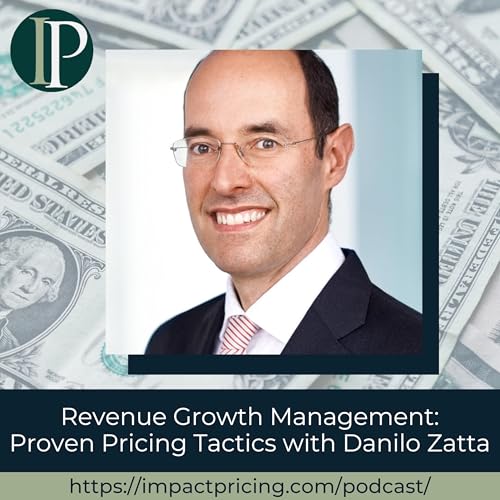Dan Layfield, founder of the Subscription Index, joins Mark Stiving to unpack the less-visible pricing and monetization levers that drive real growth in subscription businesses. With experience scaling Codecademy from $10M to $50M in revenue and leading product teams at Uber and Diligent, Dan brings a product-led, ROI-first perspective on pricing.
This episode culminates in one of the most actionable subscription pricing tactics you'll hear: how to price annual plans based on actual monthly retention, not industry norms.
If you work in SaaS, consumer subscriptions, or any recurring-revenue business, this episode offers practical insights you can test immediately.
Why You Have to Check Out Today's Podcast:
- Learn the annual pricing tactic that dramatically increases LTV and cash flow by aligning plan discounts to real retention behavior.
- Understand why subscription growth is constrained more by monetization systems than acquisition and where hidden revenue leaks live.
- Discover how product, pricing, and payment mechanics quietly shape retention long after customers click "Subscribe".
"Most subscription companies aren't intentional about their annual plan discount. When you align it to real retention behavior, it lifts everything."
– Dan Layfield
Topics Covered:
00:45 - How Dan Got Into Pricing. Dan shares how pricing became a key growth lever while scaling Codecademy and why monetization matters more as products mature.
01:10 - Scaling Subscription-Based Businesses. Dan shares lessons from scaling Codecademy's subscription business and why pricing becomes critical as companies grow.
05:12 - Subscription Pricing and Retention Strategies. How pricing decisions influence retention length and why subscription pricing must reflect real user behavior.
09:11 - Retention Challenges in Subscription Businesses. The difference between short-term and long-term retention products and why under-12-month subscriptions require different strategies.
11:32 - Subscription Product Strategies. Time to value versus time to success, and how product design affects lifecycle length and churn.
17:02 - Monetization Strategies in Subscription Businesses. What monetization really includes beyond price, from paywalls to upsells, renewals, and payment recovery systems.
19:45 - Checkout Flow Optimization Strategies. Why small checkout improvements deliver outsized ROI and how minor friction quietly suppresses revenue.
23:22] AI's Impact on Consumer Products. Why AI adoption is slower in consumer subscriptions than B2B SaaS and where future disruption may emerge.
26:30 - Annual Plan Pricing Strategy. Dan explains the monthly-to-annual pricing approach that boosts LTV, improves cash flow, and increases commitment.
29:31 - Key Subscription Product Insights. Final reflections on retention, monetization levers, and where subscription companies should focus first for growth.
Key Takeaways:
"Subscription businesses live or die on how well they capture value, not just how well they acquire users." – Dan Layfield
"The better you are at retention, the harder LTV becomes to calculate." – Dan Layfield
"Annual plans work because they create commitment at the moment of highest pain." – Dan Layfield
"A one percent improvement in checkout conversion is a one percent revenue increase." – Dan Layfield
"Most monetization problems are operational, not messaging problems." – Dan Layfield
"Small fixes at choke points beat large internal projects every time." – Dan Layfield
People & Resources Mentioned:
- Codecademy – Subscription growth case study
- Uber Eats – Marketplace product experience
- Subscription Index – Dan's subscription monetization resource
- Stripe / App Store Billing – Payment and dunning challenges in subscriptions
Connect with Dan Layfield:
- Website: https://subscriptionindex.com
- LinkedIn: https://www.linkedin.com/in/layfield/
Connect with Mark Stiving:
- LinkedIn: https://www.linkedin.com/in/stiving
- Email: mark@impactpricing.com
 6 分
6 分 29 分
29 分 3 分
3 分 30 分
30 分 5 分
5 分 30 分
30 分 2025/12/054 分
2025/12/054 分 29 分
29 分
